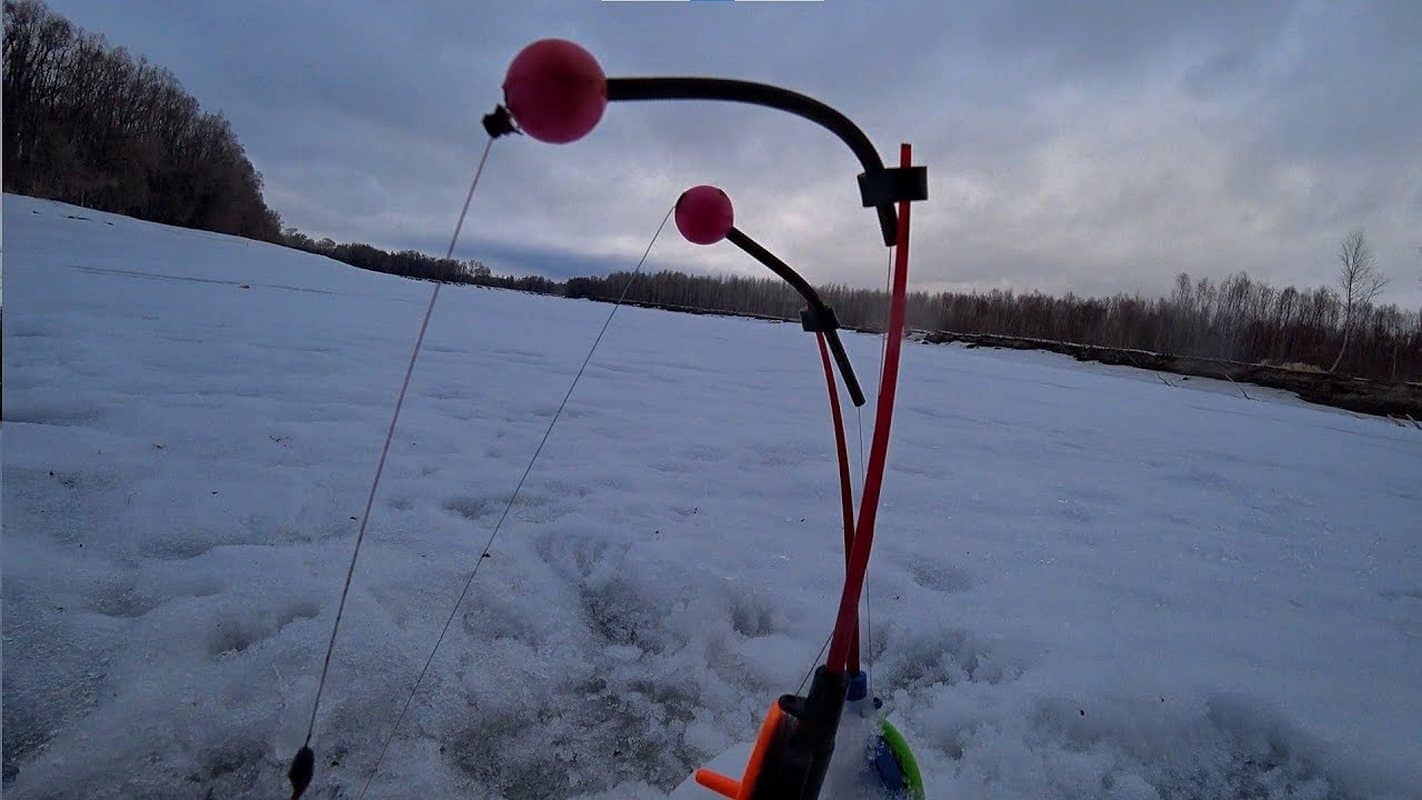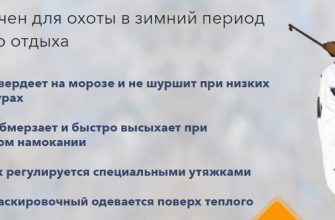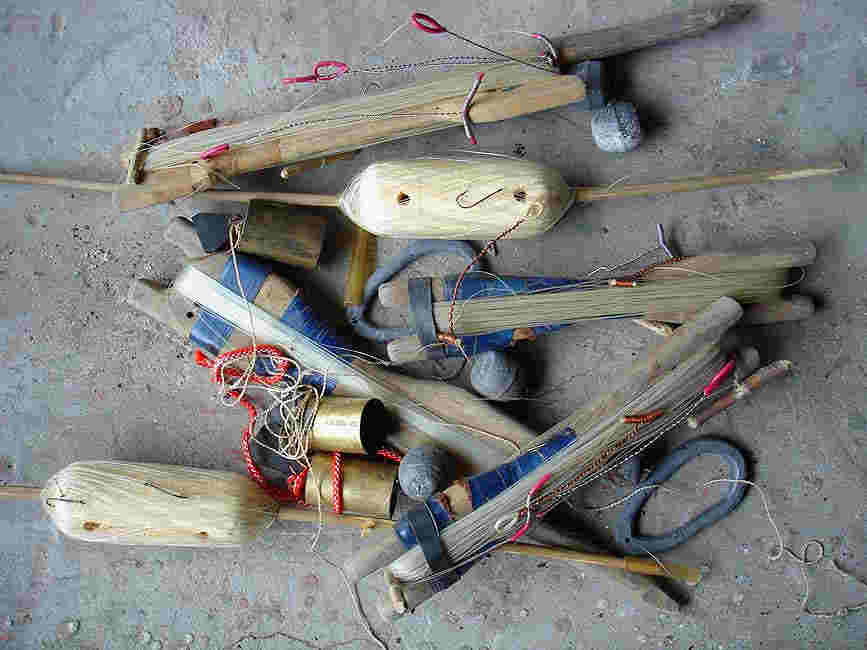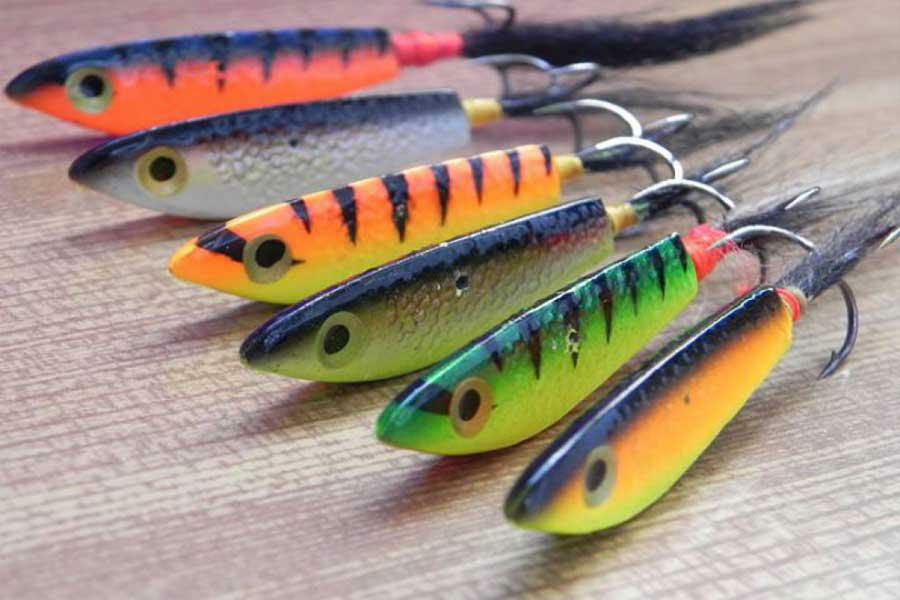Harvester, winter feeder or lowerer – fishing tackle for
winter fishing , designed for catching fish of the carp families: roach, bream, silver bream, crucian carp, as well as perch from the perch family. The main feature of the harvester is a wide range of conditions for fishing. The tackle has proven itself well on a strong current on the river, where no other equipment can reach the bottom.
- What is a combine: structure and features
- What elements does the combine consist of: photo
- How to make and assemble a do-it-yourself winter tackle harvester
- How to catch on a harvester in winter on the river
- Finding fish
- Tactics and technique of fishing
- Fishing in the current: features
- A practical way to catch bream and other fish on the river with a harvester
- Catching carp in the summer with a combine-type tackle
- Tips and secrets from experienced
- Поделиться ссылкой:
What is a combine: structure and features
A harvester is a simple winter fishing rod that has a nod, a feeder and several hooks. The peculiarity of the work of the descent is that after a hole is punched in the area with a current, it is necessary to lower the harvester under the ice. At this time, the hooks are picked up by the current and washed away. The feeder is heavier than the hooks, so it drops in a straight vertical direction right down to the bottom under the hole. During the descent, the bait is washed out of the feeder by the current and carried towards the hooks, creating a bait spot in their zone, attracting peaceful fish.
What elements does the combine consist of: photo
In order for the harvester tackle to be effective at great depths and in currents, it must be well built. Winter downhill for ice fishing for peaceful fish includes:
- fishing rod;
- main line;
- hard nod;
- sliding sinker;
- a group of hooks;
- feeder.

- A plastic container with a lid is required.
- Screw the sinker with two self-tapping screws, and screw another self-tapping screw between them, mounting a small loop above it from the wire.
- On both sides of the plastic container, use a hot nail to make 7-9 holes. The bait mixture will be washed through them.
- Pull a piece of monofilament through the hole.
- Tie a vein to the loop on the weight, twist the cap.
- A loop for fastening is formed at the top of the fishing line.
In addition to homemade feeders, rectangular feeders are suitable for the combine, but they are not so effective.
How to make and assemble a do-it-yourself winter tackle harvester
The steps for making gear are as follows:
- First you need to install a reel on the bait, do not forget about the bite signaling device. Measure the fishing line 30 meters long and pass through the gatehouse. Then tie to the coil with a reverse figure eight or similar knot.
- The main main line must pass through the swivel with a carabiner, 3 stops must be made.
- Using a knot, tie the leash to the main fishing line. The length of the leash is 1-1.5 meters.
- Find the edge of the conductor and tie a heavy lead mormyshka. Further, stepping back a distance of 40 cm, you need to tie another leash. Next, you still need to tie 2 hooks in the same way.
- Tie a loose ponytail in a loop. Install a feeder on a swivel with a carabiner.

How to catch on a harvester in winter on the river
Depending on the time of winter: first ice, deaf winter, and according to the last people, you need to vary the equipment and fishing tactics.
Finding fish
To find fish in winter, such as bream, you need to concentrate on the following locations:
- elongated and curved depressions located under steep banks, at the turn of the river;
- wide channel channels;
- extended and local pits on the river, the bottom of which is covered mainly with a layer of clay with silt.
In the backwaters and zakobay, where there is no current or it is very weak, it is difficult to find a bream, it prefers to stay in locations with the current. But carp, crucian, perch is quite possible.
Tactics and technique of fishing
Holes are drilled with an ice drill. Hole diameter -110-150 mm. To avoid chafing of the line, the edges of the hole must be well finished. The best place for fishing will be a zone in which the course of different directions and intensities, as well as depth differences are observed. When fishing downhill, the most popular bait/bait is bloodworm. The bloodworm is strictly at a given point, does not go with the flow and attracts peaceful fish well.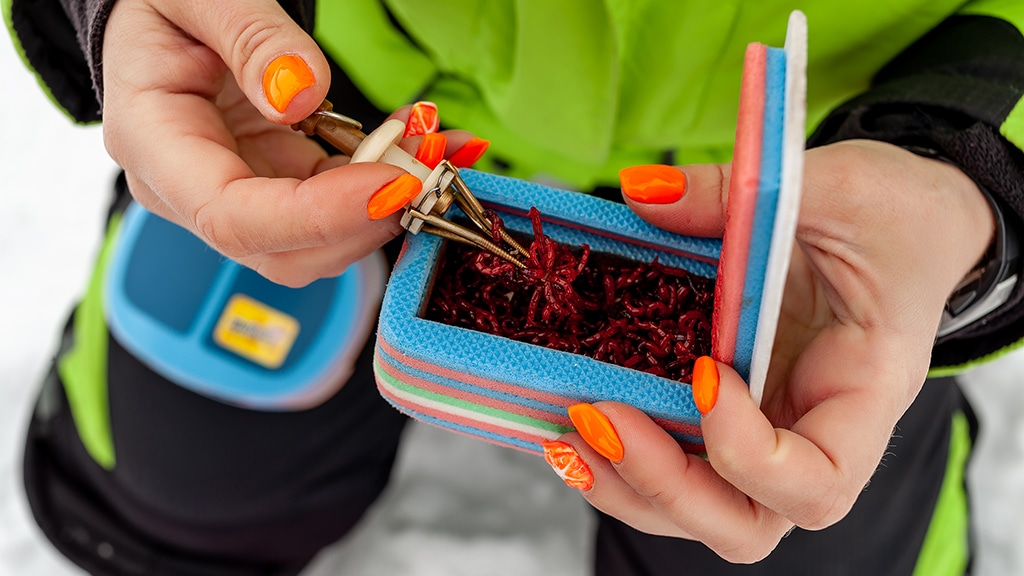
- 1 part bran;
- 1 part mashed biscuits;
- 2 parts breadcrumbs used for breading;
- 1 part crushed seeds.
Depending on which hook the majority of bites will occur on – the first or the last, it is recommended to move or, conversely, move the feeder away so that the maximum number of hooks gets into the promising fish parking area.
Fishing in the current: features
It is the current that allows the tackle harvester to take the correct location. Drilling the hole at an angle, that is, when the lower part should be directed towards the current, will reduce friction and the destructive effect of ice on the line. The bream keeps mainly near the edges, in the pits, but goes to the current in search of food. Hooks and a nozzle are first lowered into the hole, then the feeder. The fishing rod must be set so that the nod has the ability to fix even the most cautious fish, timidly trying to eat the nozzle / bait. You need to cut smoothly, but quickly. Playing is carried out with a stretched fishing line. The bream has good hearing, even the creak of snow can scare it away. Therefore, do not once again walk on the ice. Fishing with a harvester in winter on the river has three main components for success:
- choice of fishing spot;
- choice of bait;
- accurate selection of the length of the tackle.
The fisherman must move the feeder by changing the length of the working part. Such manipulation is carried out in order to find the correct distance at which most bites occur.
A practical way to catch bream and other fish on the river with a harvester
Consider the available and effective tackle fishing technique:
- In order to cover the largest promising area, it is necessary to carry out stepwise drilling of holes in a checkerboard pattern from one bank to another.
- After the holes are drilled and cleared of ice, the first working hole can be pre-feed. To do this, with the help of a dump truck-type feeder, bait is delivered in a form that is slowly and for a long time washed away by the current.

- Then the equipment is lowered into the hole. When the branch with leashes picks up the current, you need to quickly lower the feeder to the bottom in free fall.
- Near the hole, a vertical installation of the fishing rod is carried out.
After the bite, the tackle is checked, the downed bait is put on the hooks again, and the bait is poured into the feeder. And the process is repeated from the beginning.
Catching carp in the summer with a combine-type tackle
Harvester fishing tackle is good for carp fishing. It can also be made by hand. Installation is very simple. On a small spring made of thin wire, 4 leashes are tied and all together attached to the main fishing line. For leashes, a nylon thread or braided fishing line 10 cm long is used. Hooks No. 6-10 with a short forearm are tied to the completed leashes.
Attention! It is important to choose a stainless wire for the spring, otherwise the carp will not come close to the bait and there will be no catch!
Such tackle is attached to a spinning rod. Dough is used as a nozzle.
Tips and secrets from experienced
Your chances of success will increase if you consider:
- Since the bream has a large mouth, when catching this fish on a hook, you need to hook a lot of bait. If a bloodworm is used as a nozzle, then it is baited with a bunch. If there is not enough food on the hook, the bream will prick on the edge of a sharp hook and refuse to swallow further.
- Mastyrka has a too short shelf life, so you should not cook it with a margin.
- The bream has excellent hearing. In this regard, while catching this species, you can not walk on the ice and talk loudly.
- If the hole turns out to be too narrow to fish out a bream, you need to provide for this option and make 3 holes nearby. When such a specimen gets on the harvester, you can simply remove the jumper and fish out the fish.
Tackle harvester for winter fishing has many supporters among winter anglers who prefer this method of fishing. However, winter fishing in this way may seem boring and monotonous to some active hunters. Other fishermen are attracted by the availability and simplicity of the fishing method, in which the probability of a good catch is high.
